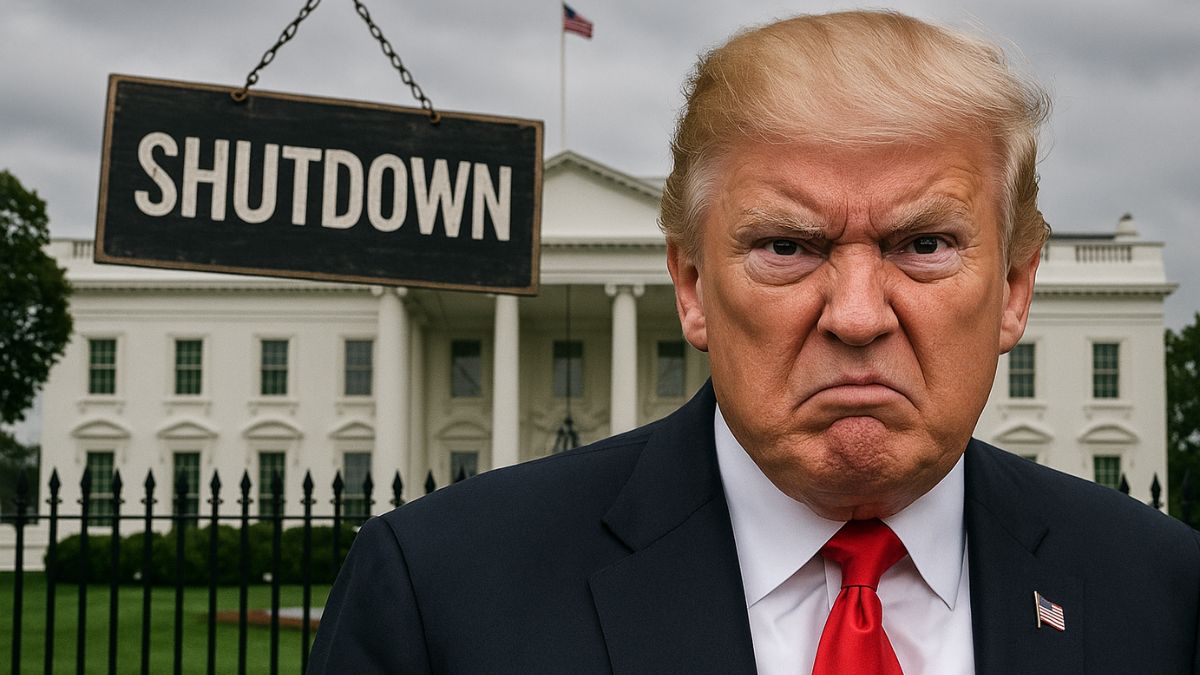The new financial year started with a shutdown for the US government as Congress failed to agree on a funding deal, with Republicans and Democrats clashing over extra subsidies for Obamacare. As the government shutdown entered its second day, President Donald Trump said he will speak with Office of Management and Budget (OMB) Director Russ Vought.
Trump’s talks with Vought will be aimed at determining “which of the many Democrat Agencies, most of which are a political SCAM, he recommends to be cut, and whether or not those cuts will be temporary or permanent,” the US President posted on Truth Social on Thursday (October 2, 2025).
US government shutdown began Wednesday (October 1, 2025) after Republicans and Democrats in Congress failed to reach an agreement on a new spending plan. The decision has left thousands of federal workers and agencies in limbo as the next Senate vote to end the shutdown is not scheduled until Friday (September 3, 2025).
US government shutdown: What is happening in the world’s largest economy?
Just 24 hours into the shutdown, the scale of disruption is already immense. A funding standoff between Democrats and Republicans over healthcare subsidies under the Affordable Care Act has paralysed key government operations. National landmarks, from the Liberty Bell in Pennsylvania to Pearl Harbour in Hawaii, have shut their doors.
Hundreds of thousands of federal workers have either been sent home or are working without pay. The depth of the political divide and the speed of its fallout underscore the gravity of the moment.
US shutdown: What triggered this political deadlock?
Senate Democrats refused to back a stopgap funding bill unless it preserved subsidies designed to prevent spikes in insurance premiums. Republicans branded the subsidies as expensive “handouts” tied to Obamacare and immigration policies, and President Trump declared he would not be “held hostage” by these demands.
With no agreement before the funding deadline, the government legally entered shutdown.
How much is the shutdown costing the US economy?
As per the Congressional Budget Office estimates, the shutdown is creating a daily loss of around $400 million. Roughly 750,000 federal employees are furloughed, while essential personnel, including military members, air traffic controllers, and border security, remain on duty without pay.
Each day of closure delays federal contracts, holds back research funding, halts infrastructure projects and weakens consumer spending. Economic experts warn that even a short shutdown can dent investor confidence and slow growth.
What is US government shutdown impact on workers and families?
Anxiety is mounting among the nearly three-quarters of a million federal employees directly affected. Essential workers continue without pay, while furloughed employees face uncertainty. Trump has hinted that furloughs could become a basis for permanent downsizing, worsening fears in departments already hit by layoffs, such as Education.
For many families living paycheck to paycheck, weeks without income could be devastating.
Civilian services across the country are being curtailed or frozen. National parks, museums and historic sites, including the Gateway Arch and JFK Library, have shut. Student aid processing has slowed, federal grants are suspended and civil rights investigations in schools have paused. Visitors are being turned away from major tourist destinations.
Is Aviation among the worst-hit sectors?
More than 13,000 air traffic controllers and thousands of aviation safety staff are now working without pay. The Department of Transportation has furloughed over 11,000 employees, affecting rulemaking, inspections and oversight. Aviation unions warn that fatigue and low morale could impact safety if the situation continues.
Airlines are bracing for delays, staffing shortages and stalled upgrades to control systems.
Worth mentioning here is that the 35-day shutdown of 2018-19 cost $3 billion in lost output and experts are of the view that the current one could prove even more damaging. Programmes such as Impact Aid, which supports schools near military bases and federal lands, could soon face delays.
